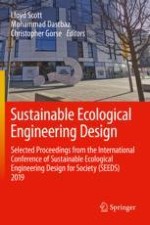2020 | OriginalPaper | Buchkapitel
The Application of Virtual Reality to Recreate an Interactive WW1 Camp
verfasst von : Stephen Wilkinson
Erschienen in: Sustainable Ecological Engineering Design
Aktivieren Sie unsere intelligente Suche, um passende Fachinhalte oder Patente zu finden.
Wählen Sie Textabschnitte aus um mit Künstlicher Intelligenz passenden Patente zu finden. powered by
Markieren Sie Textabschnitte, um KI-gestützt weitere passende Inhalte zu finden. powered by
